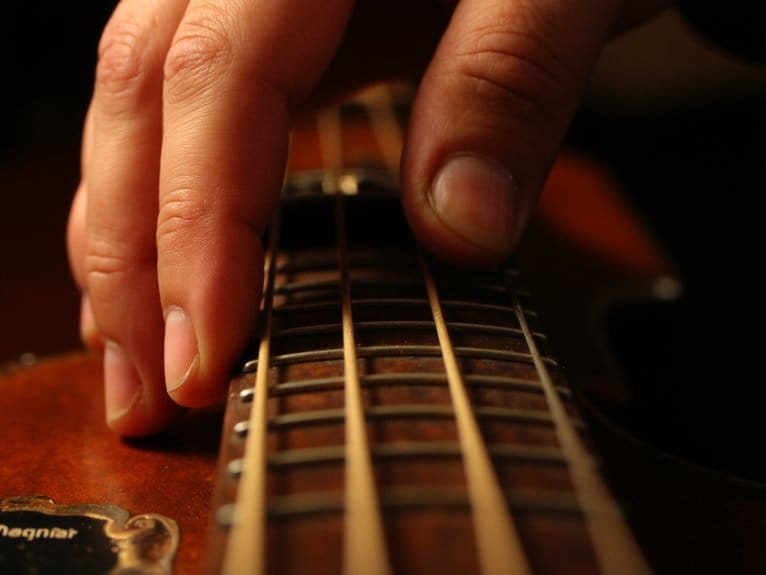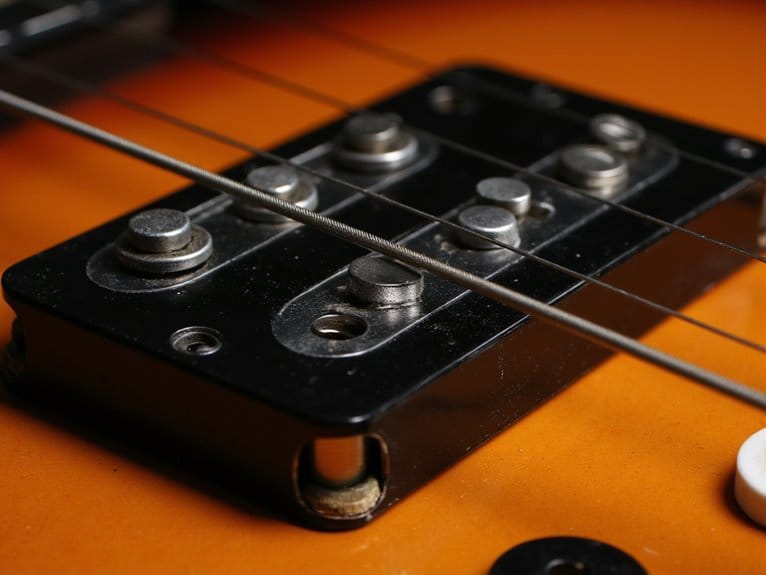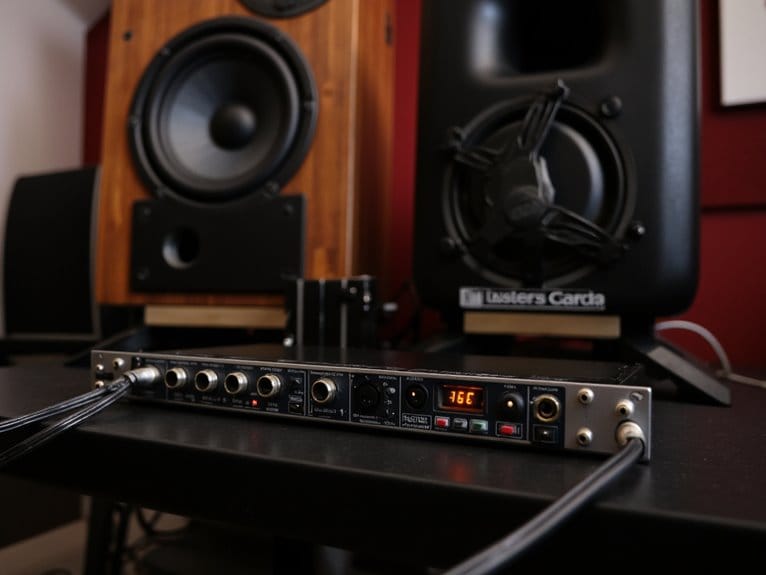Fretless Bass Mastery: Intonation and Expression
Mastering fretless bass requires developing precise fingertip placement, since millimeter adjustments dramatically affect pitch accuracy, while simultaneously training your ear through chromatic tuner feedback and interval recognition drills. You’ll need consistent practice with slow scale runs to build muscle memory, combined with recording sessions that reveal intonation inconsistencies most players miss. Once you’ve established reliable pitch control, you can explore unique expressive techniques like vocal-like vibrato, sliding intervals, and subtle pitch modulation that mimics brass instruments, unblocking creative possibilities that’ll transform your musical approach.
We are supported by our audience. When you purchase through links on our site, we may earn an affiliate commission, at no extra cost for you. Learn more.
Notable Insights
- Use fingertips instead of finger pads for precise contact and maintain proper thumb placement for stable intonation.
- Develop ear training through interval recognition drills and chromatic tuner feedback to build pitch awareness and accuracy.
- Practice slow scale runs consistently while using clip tuners to reinforce muscle memory and auditory sensitivity.
- Master vibrato techniques with finger angling and sliding intervals to achieve vocal-like expression and melodic fluidity.
- Record practice sessions for objective intonation analysis and use quality monitoring tools for effective pitch assessment.
Essential Techniques for Pitch Accuracy and Control
When I first picked up a fretless bass, I quickly discovered that achieving consistent pitch accuracy requires a fundamentally different approach than playing fretted instruments, where the metal frets do all the intonation work for you. Your finger placement becomes absolutely critical-even millimeter adjustments can shift you from perfect pitch to noticeably flat or sharp.
I’ve found that using your fingertips rather than finger pads creates cleaner contact with minimal string area, which dramatically improves intonation precision. Maintaining proper hand posture, with your thumb positioned at the neck’s back, provides the stability you’ll need for consistent pressure and pitch control.
A clip tuner becomes your best friend during practice, helping you build muscle memory for accurate positioning while playing scales slowly.
Developing Your Musical Ear Through Strategic Practice
Mastering proper finger placement represents only half the battle in fretless bass playing, because without a well-trained ear to guide those precise movements, you’ll find yourself constantly second-guessing whether you’re hitting the right pitches. Additionally, understanding the nuances of sound production can greatly enhance your fretless bass playing experience. A thorough bass pickup configuration overview will help you determine how to achieve the tone you desire, as each setup can yield different tonal characteristics. By combining your ear training with this technical knowledge, you’ll gain more confidence in your playing and musical expression.
Strategic ear training exercises become your foundation, starting with chromatic tuners as visual confirmation while practicing scales around open string anchors. I’ve found that interval recognition drills, combined with slow scale runs, dramatically improve pitch deviation awareness within weeks of consistent practice.
Focus on micro-adjustments during real-time playing, using the tuner’s feedback to train your internal pitch memory. Remember, you’re developing both fine motor control and auditory sensitivity simultaneously, which means sliding techniques and vibrato will naturally improve as your ear becomes more sensitive to subtle pitch variations.
Recording your practice sessions with a quality microphone like the SM57 can help you analyze your intonation objectively, as its contoured frequency response accurately captures the nuances of bass frequencies during playback review. Implementing audio control features similar to those found in professional mixing systems allows you to adjust echo and tone settings, helping you identify pitch inconsistencies more effectively during practice sessions.
Unlocking Creative Potential With Fretless-Specific Methods
Once you’ve developed reliable pitch accuracy through ear training, the real magic of fretless bass emerges through techniques that simply aren’t possible on fretted instruments.
I’ve discovered that embracing these unique methods transforms your playing from merely accurate to genuinely expressive. Your vibrato techniques should incorporate finger angling and rocking motions, creating vocal-like nuances that breathe life into sustained notes.
Master sliding intervals between fourths and fifths, or experiment with second intervals for tension and release, allowing melodic shifts to flow naturally without the mechanical constraints of frets.
I’ve found that combining root notes with octaves while sliding them together produces remarkably thick textures, while subtle pitch modulation within individual notes mimics brass instruments in ways that honestly surprised me when I first achieved consistent control.
On a final note
You’ve now got the foundational tools to tackle fretless bass with confidence, though I’ll admit the learning curve can feel steep at first. Your intonation will improve through consistent ear training, while your expressive capabilities will expand as you master slides, vibrato, and microtonal bends that fretted instruments simply can’t achieve. Remember, you’re developing both technical precision and artistic voice simultaneously, so patience with yourself pays dividends. Explore various techniques and styles to find your unique sound, as it will set you apart in the world of fretless playing. Investing time in trying out the best 6string bass guitars can also enhance your experience, providing you with the right tools to express your creativity. Embrace the journey, and you’ll find that each session brings you closer to becoming a proficient, expressive musician.






